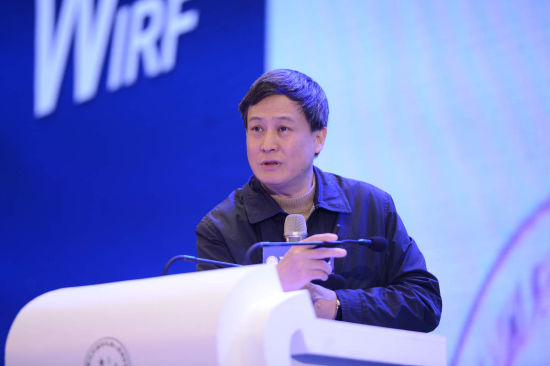

Deputy director of zhejiang provincial economic and information commission ling yun made a report at the forum.。
"Through the application of robots, labor productivity in zhejiang province increased significantly from 2012 to 2016, growing at a rate of about 9 percent per year." Zhejiang province has released a new round of "robot +" action plan, aiming to build a domestic first-class robot application demonstration base and industrial innovation and development demonstration zone, said ling yun, deputy director of the zhejiang provincial economic and information commission, at the 3rd international robot west lake forum in hangzhou, China, Tuesday.
Reporters learned from the meeting that China has been the world's largest consumer of industrial robots for three consecutive years, and the amount of industrial robots in zhejiang province has occupied the first place in the country.
Ling yun pointed out that the robot industry in zhejiang province started relatively early. Currently, there are more than 150 enterprises in the province, such as hangzhou xinsong robot, staubier, jiaxing ruihong, hangzhou kelda robot and so on.
In the robot town built by hangzhou xiaoshan economic and technological development zone, one of the leading areas of the robot industry in zhejiang province, more than 30 robot production enterprises gather, covering the manufacturing of core robot parts, systems and complete machines, forming a preliminary robot industrial chain with the industrial scale exceeding 3 billion yuan.
Zhejiang ruihong robot co., LTD., for example, produces six-axis general-purpose robots that can deliver loads ranging from 6 kg to 160 kg. Its welding robot, high-speed sorting robot, stacking robot and so on have been applied to the industrial production field. As the leader of domestic robots, xinsong robot has also been used in the manufacturing of auto parts, high and low voltage electrical appliances and home building materials.
"We are leading the country in the use of robots." Ling yun pointed out that zhejiang combined with the local block economy, sub-industry organizations to implement four batches of auto parts, electrical, pump and valve, wood industry, a total of 43 "machine replacement" sub-industry pilot demonstration. In 2016, zhejiang province had 42,000 robots in service, accounting for 12 percent of the country's total and 15 percent at the highest.
Through the application of robots, labor productivity in zhejiang province has been greatly improved from 2012 to 2016, growing at a rate of about 9 percent per year, it said.
"Ai has become a new engine of economic development," said li deyi, an academician of the Chinese academy of engineering and chairman of the Chinese association of artificial intelligence.
But ling also pointed out: "a lot of our applied robots are mechanical devices, not intelligent devices. There is no visual sensing or force sensing, so the robot is still a manipulator."
To further boost the robot industry, zhejiang issued a notice on printing and distributing its "robot +" action plan in August. Zhejiang aims to build a domestic first-class robot application demonstration base and industrial innovation and development demonstration zone by 2020, with 100,000 industrial robots in service, a manufacturing robot density of more than 120 per 10,000 people and a sales revenue of more than 150 billion yuan.
"In the future, horizontally, we need to move from mechanization to intelligence. In terms of the system, we need to build a leading enterprise with strong robot innovation capability, manufacturing and application." Zhejiang will promote further development of the robot industry by promoting applications such as "robot + manufacturing," "robot + logistics," "robot + health," "robot + service," and "robot + agriculture," ling said.

